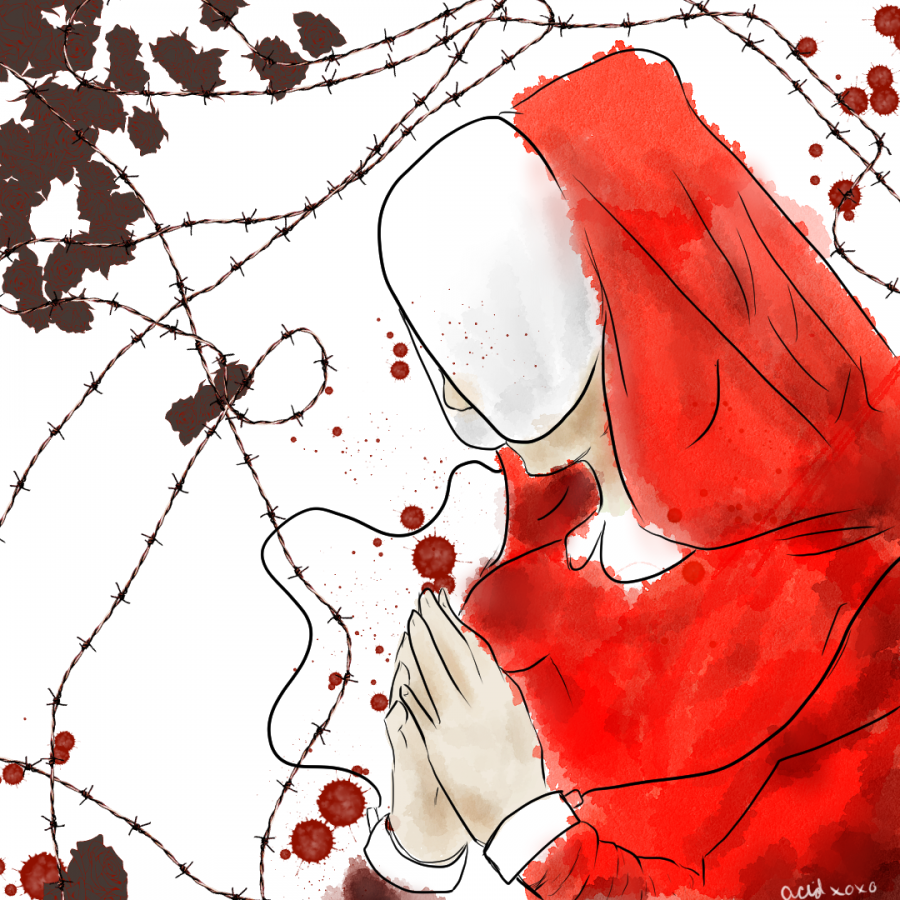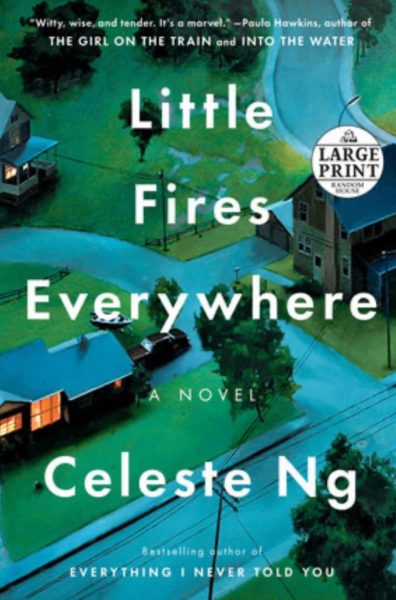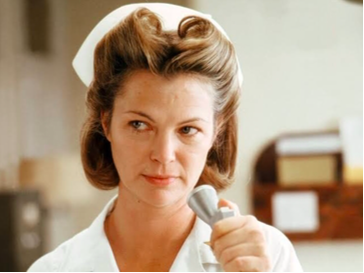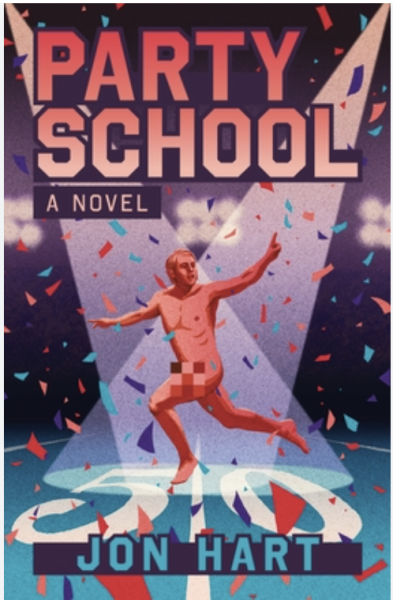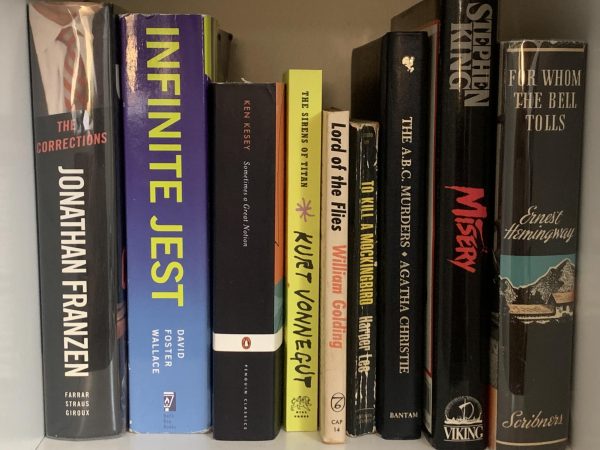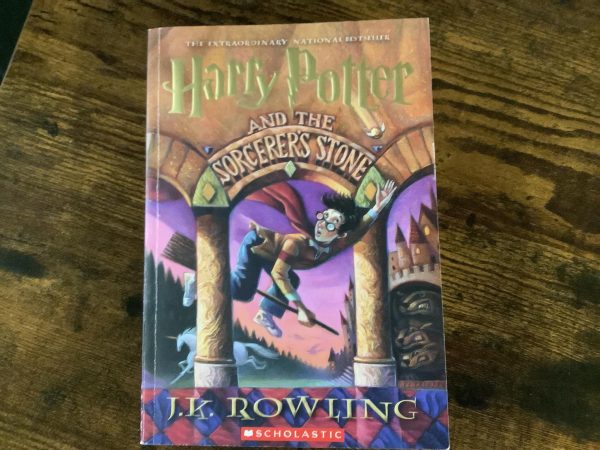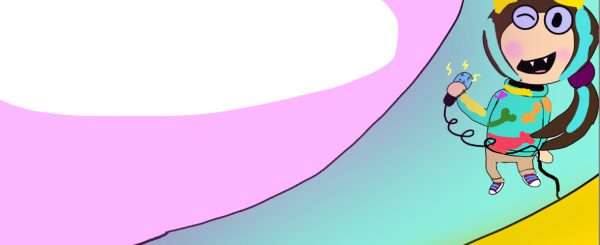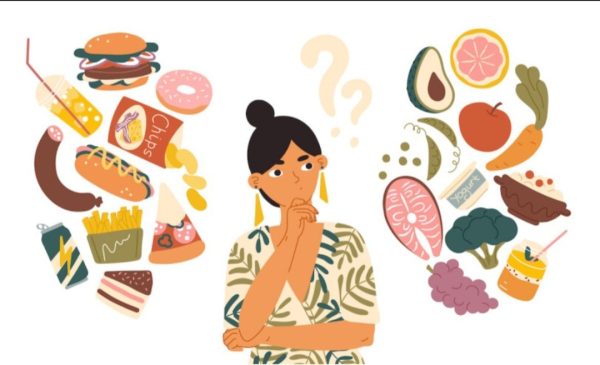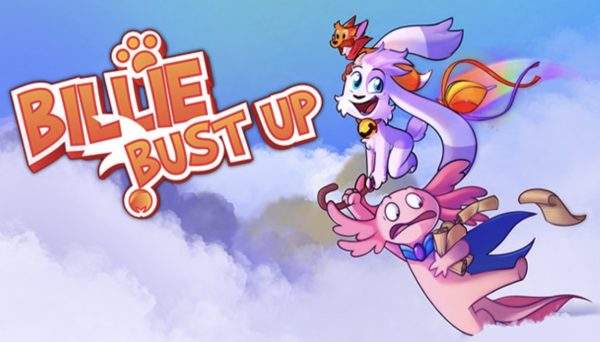Two dystopian novels that should be a warning to us all
Orwell’s “1984” Meets Atwood’s “The Handmaid’s Tale.”
Jae Wells read Atwood’s “The Handmaid’s Tale” and was inspired to draw this depiction.
In the blink of an eye, you can imagine a situation: wrapped in a dystopian society, bleeding purposeful stupidity, getting punished when this life is not punishment enough, and having anything that once may have been enjoyable stripped from your possession. Basically, you are experiencing a child’s recurring nightmare. The harsh mental visuals are intended to create a lump in the back of one’s throat. The goals of Margaret Atwood in The Handmaid’s Tale and George Orwell in 1984 are to entangle their reader in a miserable, oppressive, and harmful dystopian society. Both novels depict societies that restrict knowledge, inflict inhumane punishment, and view sex as a crime. The inclusion of certain scapegoats, power, and thought control in both novels create similar yet different dystopian societies and effects.
The scapegoats portrayed in 1984 almost emit a sense of inclusion. If not a part of Big Brother, misery prevails. This includes people of any shape or form – men, women, boys, or girls. Each human is one and the same, evolving as a threat to the party in charge. The scapegoats are taught that illogical is logical and insanity is sanity. With the slogan, “War is Peace, Ignorance is Strength, and Freedom is Slavery” (Orwell 16), Big Brother defines their totalitarian regime. Telescreens, a device used to watch the citizens, are located in everyone’s apartment or house; therefore, being watched is a given and privacy does not exist. Because all of society is used as a scapegoat and endures similar mistreatment and exposure, social classes do not survive. Arguably, however, one could say that there are two social classes – Big Brother being at the top, and the rest of the citizens at the bottom.
The use of power in 1984 is not witnessed frequently unless disobedience occurs. Punishment takes place in Room 101, in front of party bosses. Once you reach this destination, the memory of your existence escapes the minds of the citizens. Punishment ranges from torturing rebels with their fears to electrically shocking them. The pain that Winston endures when being tortured is vividly described as the following, “…the joints were being slowly torn apart. Although the pain had brought the sweat out on his forehead, the worst of all was the fear that his backbone was about to snap” (Orwell 245). Once the body endures intense harm and the rebel recognizes the so-called ‘greatness’ of the party, they are sent back to a slightly normal life – or at least similar to how it was before being caught.
The power of thought in 1984 is in the hands of socialist Big Brother. There are jobs in the government dedicated to simply erasing history, allowing the government to be correct at all times and for the people to be shielded from ‘detrimental’ information. In other words, this section of government creates a blockade between the citizens and the outside news of the world. Thought control is confirmed when Winston writes, “Freedom is the freedom to say that two plus two make four” (Orwell 81). This example of such simple information being owned by the Party creates an eye-opening realization of the power they hold. Newspeak, a language created to “narrow the range of thought,” is the language permitted by the Party. Simple liberties are taken away from the citizens in 1984 due to the immense power that the government holds.
Women in The Handmaid’s Tale are directly singled out amongst others as scapegoats. Women are isolated from their former lives, becoming slave-like creatures, because of the decline in birth rates. This creates fear knowing that the world is back to how it once was, viewing women as inferior. Because of the isolation of one group in particular, social classes exist. For instance, the Commanders’ wives are seen as upper class. The upper class experience freedoms like going places alone and most importantly, avoid rape. Handmaids are considered to belong to a much lower class where being raped becomes the norm. Before this isolation, the idea of rape was almost unknown. Offred made this clear when once joking with Moira, “Date rape, I said. You’re so trendy. It sounds like some kind of dessert. Date rapé” (Atwood 38). Even below handmaids are the women that are sent to the Colonies. The inability to produce babies put these women in danger. Falling lower on the ‘social class scale’ corresponds with an increase of blame for “wrongdoings.”
Power and punishment in The Handmaid’s Tale both frequently occur, proving to be a lifestyle for many. If a woman commits a ‘crime,’ women of proven fertility can either go to the Colonies, which is basically a death sentence, or become a handmaid. Handmaids perform intercourse with an individual’s husband and give any resulting children to the couple. Additionally, handmaids are often hung on a wall for everyone to see. Sometimes, they even hang themselves in order to avoid the embarrassment. This is exactly what Ofglen did “when she saw the van coming for her” (Atwood 285). Ofglen believed that punishing herself before the government could was a way to avoid torture. The power the government holds allows it to push individuals to be in these circumstances where they are suicidal. Overall, enough power can translate into death and although the memory of a person is not forgotten when they die, the consequences are remembered.
Thought control by the government in The Handmaid’s Tale allows for enough thought to make one go insane, while simultaneously creating an environment where women are inferior. For instance, although the government has plenty of power, they do not restrict knowledge of the past. This leaves the imprisoned longing for what life once was. However, handmaids are not allowed to go by their former names. After Offred’s shopping partner, Ofglen, is ‘transferred’ “so soon,” she is replaced by a new woman, also named Ofglen. In this society, these names are almost like the branded numbers on cattle’s skin – when number one dies or disappears, a new number one emerges. It is additionally clear that the government restricts knowledge by Offred’s excitement to play Scrabble (Atwood 139). While in a locked room, with a forbidden person, wearing the mandatory red dress, she feels free when spelling out words. The government choosing to allow some topics knowledge over others creates a more distinct line of the freedoms which these women have lost.
Dystopian societies allow for the survival of the fittest. A distinct group, known as a scapegoat, endure punishment, restrictions, and loss. Whether it is due to a loss of identity, a friend, or freedom, insanity is inevitable. 1984 and The Handmaid’s Tale depict societies that portray this environment in different ways. Each novel, grabbing the reader into an imaginable, dark society, provides the direct glimpse of a nightmare.


